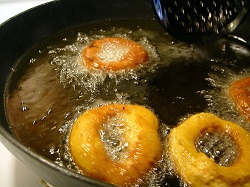 While grease traps are installed in commercial kitchens across the world, you may not be familiar with exactly how it works. The drain cleaning experts from KRK Enterprises, Inc wrote this brief guide to your grease trap because we know that the more you know about your drainage systems, the better you will be able to maintain them. The better you maintain your grease traps, the more effective they will be at removing greases, fats, oils and other wastes.
While grease traps are installed in commercial kitchens across the world, you may not be familiar with exactly how it works. The drain cleaning experts from KRK Enterprises, Inc wrote this brief guide to your grease trap because we know that the more you know about your drainage systems, the better you will be able to maintain them. The better you maintain your grease traps, the more effective they will be at removing greases, fats, oils and other wastes.
How Does It Work?
Grease traps are simple – the trap is nothing more than a device that separates fats and oils from wastewater as wastewater flows through your kitchen drains and pipes. Because grease, a mixture of oil and fat, is 10-15% denser than water, it is easily separated from wastewater because it will not mix with water.
As the water and grease flow into the trap, the grease rises to the top of the water where it is separated by a system of baffles. The grease fills the trap and displaces the water out of the trap and into the sewers. Remember, when your grease trap is full, you will need to clean it or it will not be able to remove any grease.
Why Do I Need a Grease Trap?
Installing a grease trap helps commercial kitchens run efficiently by preventing blockages in your pipes and eliminateing unpleasant odors. In fact, many state local governments require that commercial kitchens be equipped with grease traps.
Learn more about your grease trap by calling the grease trap experts at KRK Enterprises, Inc at your convenience. Feel free to schedule an inspection where we can walk you through the proper maintenance procedures for your grease trap.

